In this post, I will show you how easy it is to make self-rising flour at home with only two simple ingredients. I will also share how you can add a little salt if you prefer. This homemade self-rising flour works perfectly in all your favorite baking recipes, so keep reading to find out why and how to make it yourself.
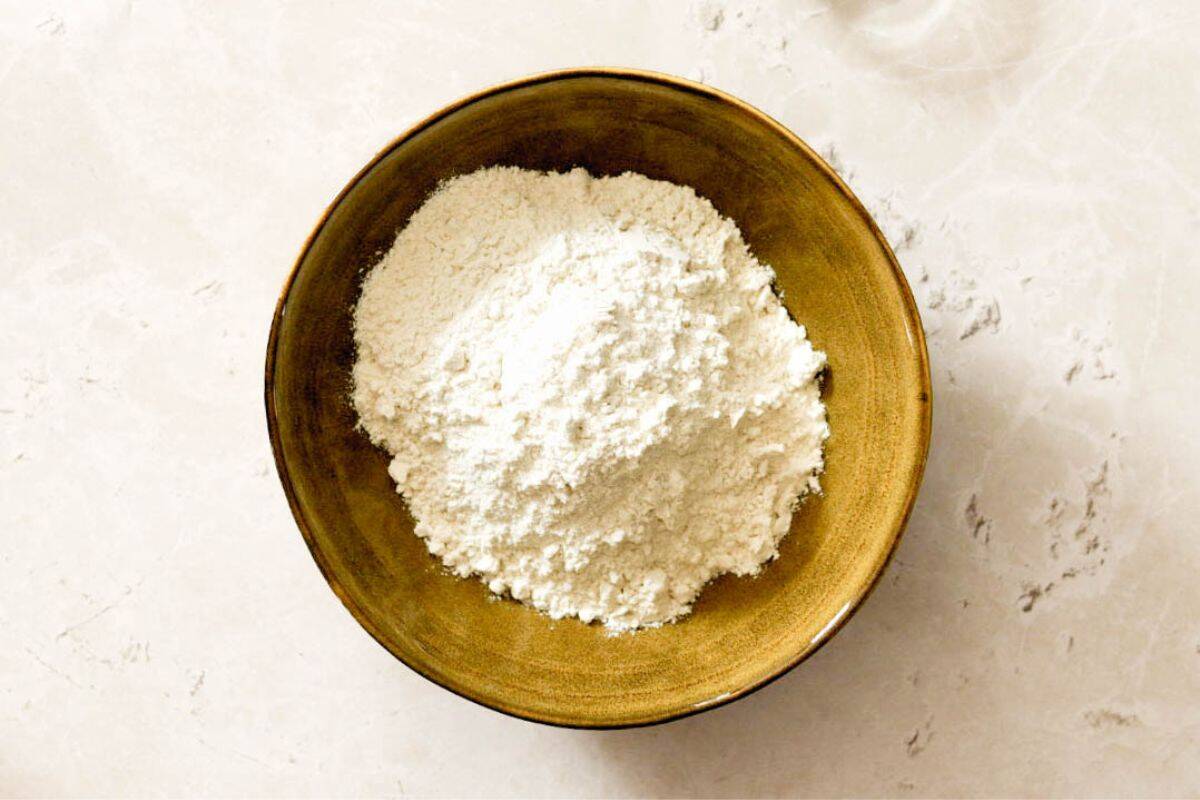
What is it and when do you use it?
Self-rising flour is a type of flour that already has baking powder mixed in, which means you don't need to add a separate leavening agent to make your baked goods rise. It is often made with all-purpose flour, baking powder, and sometimes a little salt. This flour is especially popular in Southern-style baking and is perfect for quick recipes like biscuits, pancakes, scones, and certain cakes.
You use self-rising flour just like regular flour, but you skip adding extra baking powder (and salt if it is already included). Just mix it in with your other dry ingredients and continue with the recipe.
Why should you make self-rising flour?
- I like to have everything I need to make my favorite recipes on hand, but there isn't always enough room in my pantry. Making my own self-ring flour means I don't have to have rows of all types of flour, only all-purpose flour, and a small container of baking powder! You simply make a small batch when you need it.
- It can be hard to find outside of Europe, but you need it for a lot of European recipes.
Ingredients
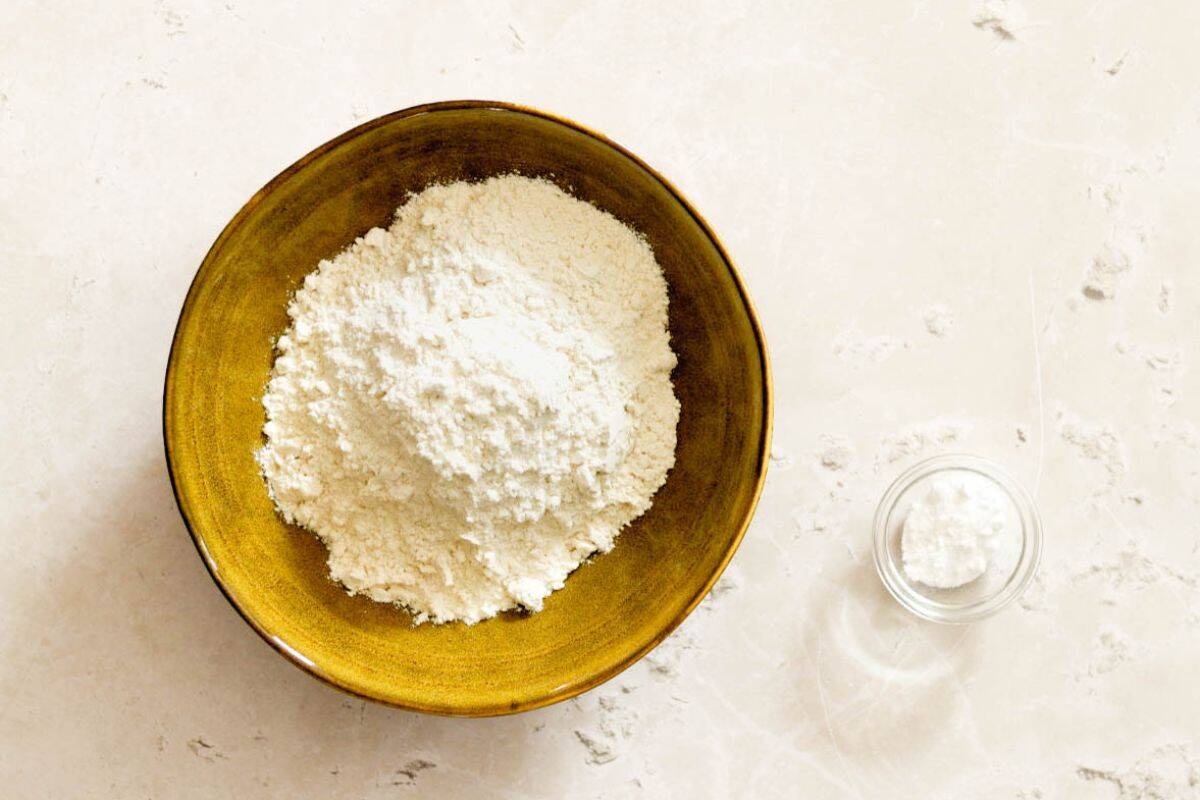
Flour: I always use all-purpose flour when I make self-rising flour, but this recipe works with every type of flour, including gluten-free!
Baking powder: We add baking powder as a rising agent. Make sure you use fresh baking powder, as it loses its powder over time. If you're not sure how long yours has been hanging around in your pantry, you should probably buy a new package and use that for this recipe.
Salt *optional: I never add salt because I like to add it separately to have more control over the flavor, but if you do, you need to add one teaspoon of fine salt to every 2 cups of flour.
How to make self-rising flour
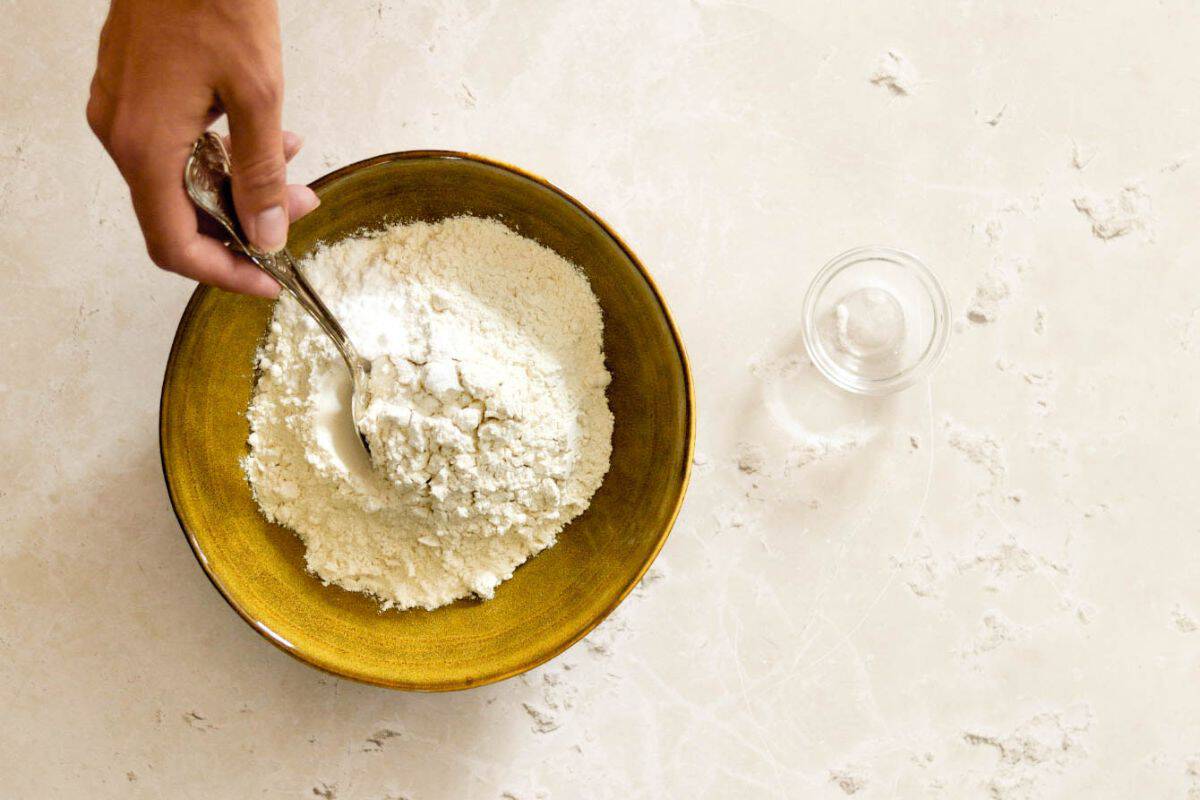
Take your flour and baking powder and add them to a bowl. Mix it with a whisk until thoroughly combined, and you can't see any white spots.
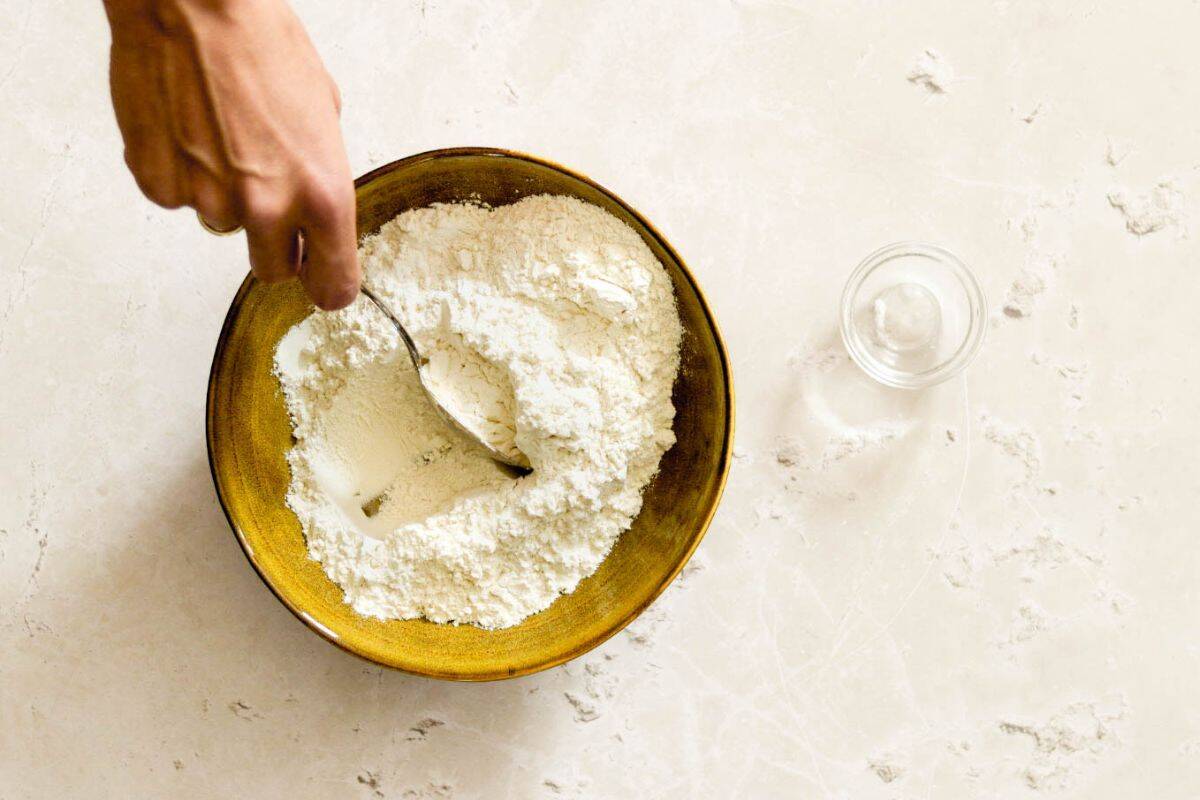
That's it! Your self-rising flour is done. I like to put mine through a sieve to make sure there aren't any clumps. I transfer it to an air-tight container, but you don't have to.
What to make with self-rising flour
Like I mentioned earlier, you can use it for every recipe that calls for both baking powder and flour. Here are a few of my favorites!
- Pancakes. In my favorite pancake recipes, we add baking powder, so this is perfect for when you're making my oatmeal pancakes, chocolate pancakes, or oat milk pancakes.
- Cake and banana bread. You can also use it to make my chocolate sour cream pound cake, lemon curd cake, and vegan olive oil cake, or use it to make banana bread or date cake.
- Scones. Many English recipes for scones ask for self-rising flour, so it is perfect to make my white chocolate and raspberry scones, cinnamon scones, or try your hand at my oatmeal scones!
- Muffins and cupcakes. Speculaas muffins and classic cupcakes are also great to make with self-rising flour. If your recipe also needs baking soda, you still need to add that, though.
- Dutch recipes. Self-rising flour is often used to make traditional Dutch treats like speculaas, pepernoten, gevulde speculaas, and chewy almond cookies.
- Bread and biscuits. There are recipes for bread and biscuits that rely on baking powder as a rising agent instead of yeast.
- Cookies. And last but not least, you can absolutely use it to make cookies! Think homemade brownie cookies, vegan cookies for Halloween, lemon curd cookies, ginger cookies with fresh ginger, and chocolate-filled cookies.
My tips for the best results
- Make sure your baking powder is not too old.
- Put your homemade self-rising flour through a sieve and press any small clumps. This will make sure the baking powder gets distributed evenly through your mixture.
- Make small batches when needed.
Frequently asked questions
Yes!!! You can use oat flour or any gluten-free flour you need for a recipe.
When your recipe calls for self-rising flour but you don't have it at hand, you can substitute it with all-purpose flour and baking powder. Keep in mind that the best ratio is 1:1, so add one teaspoon of baking powder to every cup of flour.
Storage
Self-rising flour will keep for about a year if you store it somewhere cool and dry. I like using a mason jar, and if I only have a small amount, an empty jam jar works just as well. This keeps the flour safe from any moisture. The baking powder will slowly lose its strength over time, so it is best to make small batches. You can always mix up a fresh batch when you need it.
Recipes you can make with self-rising flour
How to Make Self-Rising Flour
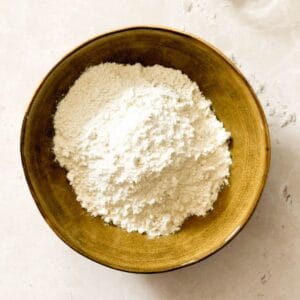
Ingredients
- 4 cups all-purpose flour
- 3,5 teaspoon baking powder
- 1 teaspoon salt *optional
Instructions
- In a large bowl, mix the flour and baking powder together until everything is well combined and there aren't any clumps left. If there are a few large clumps of baking powder, you can press them flat on the side of your bowl and mix until the white spots have disappeared.
- Put it through a sieve, add it to an air-tight container, and store it in a cool, dark place.
Notes
- You can store your homemade self-rising flour for up to a year if you keep it in a dark place and an air-tight container.
- This is the perfect substitute for flour and baking powder.
- Check my post for all my tips for success, and recipes you can make with self-rising flour.

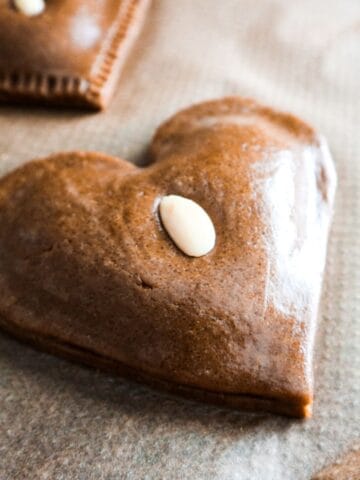


So easy and simple! I’m never going to buy self rising flour again.
This is such an incredibly helpful guide!
This is very helpful and I'll be saving it
This post was honestly god sent. I was out of self raising flour and need to bake something for school tommorow. Thankyou